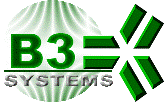Electronic Drift Checks

Electronic Drift Checks
The Titan and Atlas sensors can be configured with automated electronic drift check functions. The two (2) functions are a zero/span check and a linearity check. The zero/span check confirms the overall operations of the dust sensing process. The linearity check verifies the functionality of the dust at zero/span and three (3) intermediate points.
How it works
And electronic drift check verifies the condition of the signal processing electronics. The zero function measures the resulting signal with the dust inputs grounded. The span, and other linearity checks, are measured while injecting a known signal into the electronics. The results are compared to expected values and reported to local modbus registers. The most common version of an EDC is a zero and span check. However, our sensors also have a linearity check function built-in which tests the entire measurement range. Please note that these functions only check the signal processing electronics.
Remote Maintenance Check
Sometimes there are dust trends which may not seem normal. By manually initiating an EDC function, anyone can verify if the sensor's electronics are good or not. Combine an EDC with the rod isolation check and the sensor's operatoin and quality of the dust signal can be verified easily and quickly.
EPA MACT Guidance
Electronic zero & span checks are required under the current EPA guidance on BLDs. Our automated functions eliminate the need for a special signal generator and all of the man-hours to phyically check each sensor. If your system includes a Sentinel, the results from each EDC are logged and the most current results displayed for users. If you are communicating directly with the sensor then the results are presented in Modbus registers.
